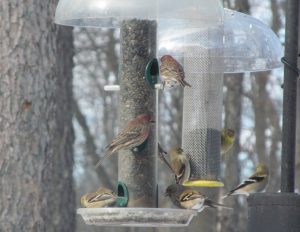Tag Archives: Black-capped chickadee
Nature Sightings
What do you do when it approaches 70 degrees Fahrenheit in February? Many people get 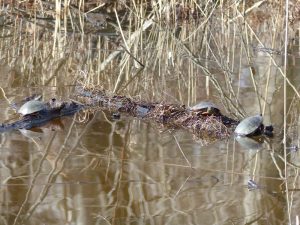 outside to soak up the sun and warmth. Many animals are doing the same. There are already painted turtles that are basking on pond logs in the preserve. The mild weather and rains have likely awakened spotted salamanders which will soon make their journey to our vernal pools. Most of the year these salamanders are underground. Spring peeper frogs are peeping along the perimeter of ponds and marshes. Red-winged blackbirds, an early migrant, sing in the cattail marshes. Next time you are on a highway, look for turkey vultures soaring on updrafts during on their migration North. Black-capped chickadees have turned to their “fee bee” call. Local sugar maple trees are being tapped early for sap to make maple syrup. Soon, spring ephemeral flowers will be carpeting the forest and frog choruses will echo through the preserve.
outside to soak up the sun and warmth. Many animals are doing the same. There are already painted turtles that are basking on pond logs in the preserve. The mild weather and rains have likely awakened spotted salamanders which will soon make their journey to our vernal pools. Most of the year these salamanders are underground. Spring peeper frogs are peeping along the perimeter of ponds and marshes. Red-winged blackbirds, an early migrant, sing in the cattail marshes. Next time you are on a highway, look for turkey vultures soaring on updrafts during on their migration North. Black-capped chickadees have turned to their “fee bee” call. Local sugar maple trees are being tapped early for sap to make maple syrup. Soon, spring ephemeral flowers will be carpeting the forest and frog choruses will echo through the preserve.
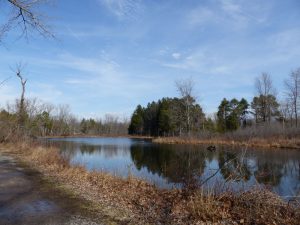
Nature Sightings
Many visitors have come out to enjoy the first significant snowfall of the year. 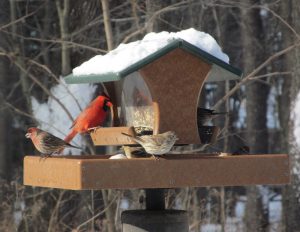 Snowshoeing and cross-country skiing has been great with 6 to 8 inches of snow. You can find out information about our snowshoe and ski rentals here.
Snowshoeing and cross-country skiing has been great with 6 to 8 inches of snow. You can find out information about our snowshoe and ski rentals here.
Song birds have been flocking to our bird feeders with the colder temperatures and snowpack. Birds that can typically be seen from our nature viewing area are: Blue Jay, black-capped chickadee, dark-eyed junco, house finch, tufted titmouse, white-breasted nuthatch, American goldfinch, northern cardinal, mourning dove, tree sparrow, and various woodpeckers. A pileated woodpecker has also been known to visit the feeders 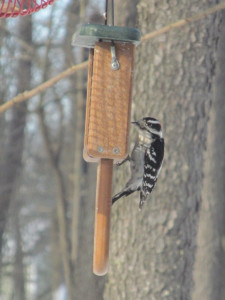 occasionally. Gray squirrels are also common visitors under the feeders. Occasionally a meadow vole is seen quickly scurrying about gathering seeds.
occasionally. Gray squirrels are also common visitors under the feeders. Occasionally a meadow vole is seen quickly scurrying about gathering seeds.
The snow reveals a world that is normally invisible and can tell interesting stories. Deer trails become very obvious in the snow. In very light snow you can follow the tiny bounding prints of mice (with their tail drag marks) from log to log. Occasionally you may even see wing prints on the snow where a bird took flight.